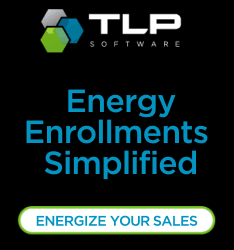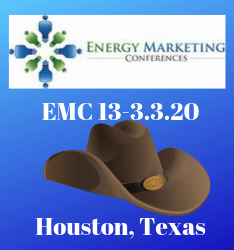|
|
|
|
|
NYSERDA Proposes To Fund New Renewable Program Via New Charge On ESCOs, LSEs
The following story is brought free of charge to readers by EC Infosystems, the exclusive EDI provider of EnergyChoiceMatters.com
The New York State Energy Research and Development Authority (NYSERDA) petitioned the New York PSC for creation of a Competitive Tier 2 clean energy standard (CES) program through which NYSERDA would issue a series of annual competitive procurements for Renewable Energy Certificates (RECs) from eligible existing renewable resources, with LSEs such as ESCOs assigned a procurement obligation to fund the program
NYSERDA proposes that funding for the Competitive Tier 2 program would be through a new Tier 2 REC obligation imposed on load serving entities (LSE). The program would be administered in a manner similar to the process approved by the Commission for the zero-emissions credit program. NYSERDA and Staff would annually calculate a uniform per MWh rate that would be applied to each LSE’s actual wholesale load to calculate their Tier 2 Monthly Obligation Payments, with a January 1st through December 31st compliance year.
The dollar per MWh rate to be paid by each LSE for the compliance year would be calculated according to the following formula:
LSE Tier 2 Rate = NYSERDA’s maximum expected total cost to procure Tier 2 RECs / Forecasted statewide electric load
The LSE Tier 2 Rate would be applied to the wholesale load data NYSERDA receives from the NYISO. The cost component of the LSE Tier 2 Rate would be based on the total forecasted cost for NYSERDA to purchase Tier 2 RECs in the specific year, based on the aggregate bid quantity and bid prices for the contracted generation. The load component of the LSE Tier 2 Rate would be based on a statewide forecasted load. An LSE’s Tier 2 Monthly Obligation Payment would be calculated using the LSE Tier 2 Rate, the number of MWh the LSE served, using the New York Independent System Operator’s (NYISO) Version 1 load data and a Load Modifier Rate according to the following formula:
LSE Tier 2 Monthly Obligation Payment = (LSE Tier 2 Rate) x (LSE’s Version 1 MWh) x (Load Modifier Rate)
NYSERDA would utilize Version 1 of the total LSE load data, as settled by the NYISO each month, as a basis for each LSE’s Tier 2 Monthly Obligation Payment to NYSERDA. NYSERDA typically receives load data from the NYISO on or around the 15th day of the following month. NYSERDA would then determine the LSE’s Tier 2 Monthly Obligation Payment to NYSERDA using the formula specified above and issue an invoice. LSEs would submit their payment to NYSERDA within 15 days from the issuance of the invoice.
The Annual Tier 2 Obligation Amount would be determined by a final reconciliation that would occur after the close of each compliance year. The reconciliation process would be based on the LSE’s load using NYISO Version 2 data, the total load served by the LSEs and the total dollars expended by NYSERDA to purchase Tier 2 RECs during the compliance year.
The reconciliation process would occur after the Tier 2 compliance year ended on December 31st. NYSERDA would reconcile the funds collected from each LSE to the funds necessary to meet their obligation based on the Version 2 load data that is provided from the NYISO and recorded in NYGATS. This load would be adjusted for load modifiers as described in the Phase 1 Implementation Plan. NYSERDA would also reconcile the funds collected from the LSEs against NYSERDA’s financial obligations due to the purchase of Tier 2 RECs. This reconciliation would take into account the actual adjusted statewide load and NYSERDA’s actual Tier 2 REC payments during the referenced compliance year.
In summary, NYSERDA would utilize the following process to determine the Annual Tier 2 Obligation Amount and reconcile the funds necessary to purchase the Tier 2 RECs and account for collections from the LSEs.
1. NYSERDA would determine the actual dollar per MWh charge based on the total dollars expended by NYSERDA to purchase Tier 2 RECs during the compliance year.
2. NYSERDA would sum the total load served by the LSEs using the NYISO Version 2 load data including load modifiers.
3. Steps 1 and 2 would be used to determine the Annual Tier 2 Obligation Amount.
4. The Annual Tier 2 Obligation Amount would be applied to the total load associated with each LSE, as recorded in NYGATS, and provide the LSEs their Tier 2 obligation for the compliance year.
5. NYSERDA would reconcile the payments received from each of the LSEs against the Annual Tier 2 Obligation Amount.
Concerning the program itself, NYSERDA proposes to advance a three-year Competitive Tier 2 program to support wind and hydropower facilities through standard 3-year contracts. Competitive Tier 2 eligible facilities would be existing non-state-owned run-of-river hydropower and existing wind generators located within the State. The Climate Leadership and Community Protection Act [CLCPA] definition of renewable energy systems excludes certain resources currently eligible under the CES rules, including fuel cells using natural gas and anerobic [sic] digesters, among others. Those resources therefore would not contribute to the achievement of the CLCPA goals and NYSERDA does not propose that they be eligible for this program.
To be eligible for the competitive Tier 2 program, facilities would have to have entered commercial operation prior to January 1, 2015. Qualifying Tier 2 facilities could submit a bid to sell RECs associated with generation output that is not under contract with NYSERDA, as well as any output that comes off of a NYSERDA contract during the period covered by the Competitive Tier 2 commitment period. Facilities with an active agreement with NYSERDA, such as an agreement for their Tier 1-eligible generation based on a facility upgrade, or an agreement under the existing Tier 2 Maintenance contract program, would only be eligible to participate in the Competitive Tier 2 program to the extent that any otherwise eligible generation is not subject to such an agreement. NYSERDA proposes that the Commission continue the existing Maintenance program, as adopted through previous orders, for any developers not selected under the Competitive Tier 2 program or that otherwise may face a financial hardship. However, facilities with active Tier 2 Maintenance agreements would not be eligible for the Competitive Tier 2, and vice versa. Further, participation in Competitive Tier 2 solicitations would not prohibit a facility from obtaining Tier 1 eligibility for an upgrade or repowering
NYSERDA proposes to size the overall program volume to include the majority of the eligible generation, but to limit annual procurement volumes to promote competition with the goal of lowering costs and encouraging generators to submit reasonable bids based on need.
"Additionally, this partial procurement approach would allow growth of the voluntary market to purchase the remaining RECs from generators not awarded a contract," NYSERDA said
The Competitive Tier 2 program would utilize a modified version of the current solicitation format used for RES Tier 1 procurements. In each year of the three-year program, NYSERDA would issue a Request for Proposals (RFP) for approximately one-third of the total MWh of generation from eligible facilities, which would ensure that some RECs would remain available for voluntary markets for uses such as green power products, Community Choice Aggregations (CCA), etc.
"This staggered approach would provide an opportunity for most wind and hydropower generators to receive an award by the end of the 3-year program," NYSERDA said
NYSERDA proposes specific details and processes regarding Eligibility, Certification, Procurement, LSE Compliance and other Reporting Requirements similar to the current processes in place for Tier 1
During an RFP, eligible facilities could then submit a bid as a combination of annual MWh (bid quantity) and a dollars per Tier 2 REC/MWh bid price. After the RFP closed, all eligible bids would be ranked in ascending order based on bid price alone. Contracts would be awarded based on the as-bid price, starting with the lowest bid until the total bid quantity reaches the target solicitation MWh or the confidential maximum bid price is exceeded. NYSERDA would reserve the right to reject any and all bids. Successful bidders would enter into 3-year standard contracts with NYSERDA for the bid quantity at the bid price.
NYSERDA has included with its petition a standard agreement that would be used to govern Tier 2 REC transactions between NYSERDA and the LSEs
Case 15-E-0302
ADVERTISEMENT Copyright 2010-20 Energy Choice Matters. If you wish to share this story, please
email or post the website link; unauthorized copying, retransmission, or republication
prohibited.
January 28, 2020
Email This Story
Copyright 2010-20 EnergyChoiceMatters.com
Reporting by Paul Ring • ring@energychoicematters.com
NEW Jobs on RetailEnergyJobs.com:
• NEW! -- Senior Consultant - Competitive Energy Markets -- Houston
• NEW! -- Channel Relations Manger -- Retail Supplier
• NEW! -- Customer Service Representative -- Retail Supplier
• NEW! -- Renewables and Energy Trader -- Retail Supplier
|
|
|
|










